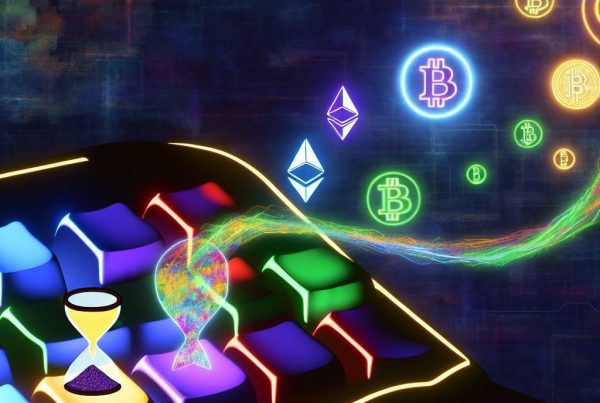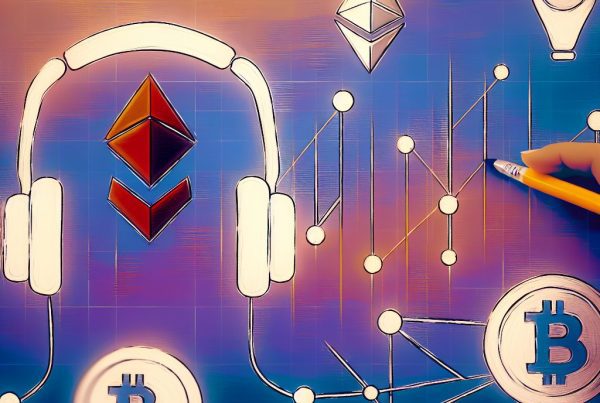What Is the Gas Price Oracle?
The cryptocurrency landscape is filled with innovative technologies and concepts that aim to enhance the efficiency and usability of blockchain networks. Among these innovations is the Gas Price Oracle, a crucial component that plays a significant role in the functioning of decentralized applications (dApps) and smart contracts. Understanding what a gas price oracle is, how it works, and its implications for the crypto industry is essential for anyone looking to navigate the complexities of blockchain technology.
Understanding Gas and Gas Prices
Before diving into the specifics of gas price oracles, it’s important to grasp the concepts of gas and gas prices in the context of blockchain networks, particularly Ethereum.
Gas refers to the unit that measures the amount of computational effort required to execute operations on the Ethereum network. Every transaction or smart contract execution requires a certain amount of gas, which is paid for in Ether (ETH). The gas price is the amount of Ether a user is willing to pay per unit of gas, typically expressed in Gwei (1 Gwei = 0.000000001 ETH).
Gas prices fluctuate based on network demand. When the network is congested, users may need to pay higher gas prices to ensure their transactions are processed quickly. Conversely, during periods of low demand, gas prices tend to decrease.
What Is a Gas Price Oracle?
A Gas Price Oracle is a decentralized service that provides real-time data on gas prices across various blockchain networks. It aggregates information from multiple sources to deliver accurate and up-to-date gas price estimates, helping users make informed decisions about their transactions.
Gas price oracles are essential for dApps and smart contracts that require dynamic gas pricing. By utilizing these oracles, developers can optimize transaction costs and enhance user experience by ensuring that transactions are executed at the most favorable gas prices.

How Gas Price Oracles Work
Gas price oracles operate by collecting data from various nodes and sources within the blockchain ecosystem. Here’s a breakdown of how they function:
- Data Aggregation: Gas price oracles gather gas price data from multiple nodes and exchanges. This data is then aggregated to provide a comprehensive view of the current gas prices.
- Real-Time Updates: The oracles continuously update their data to reflect changes in gas prices, ensuring that users have access to the most current information.
- Decentralization: Many gas price oracles are decentralized, meaning they rely on a network of nodes to validate and verify the data they provide. This reduces the risk of manipulation and enhances reliability.
- Integration with dApps: Developers can integrate gas price oracles into their dApps, allowing users to see real-time gas prices and make informed decisions about transaction timing and costs.
Importance of Gas Price Oracles in the Crypto Ecosystem
Gas price oracles play a vital role in the overall functionality and efficiency of blockchain networks. Here are some key reasons why they are important:
- Cost Efficiency: By providing accurate gas price data, oracles help users avoid overpaying for transactions, leading to significant cost savings.
- Improved User Experience: Users can make informed decisions about when to execute transactions, enhancing their overall experience with dApps.
- Smart Contract Optimization: Developers can program smart contracts to adjust gas prices dynamically based on real-time data, ensuring optimal performance and cost-effectiveness.
- Market Transparency: Gas price oracles contribute to market transparency by providing users with clear insights into transaction costs, fostering trust in the ecosystem.
Real-World Applications of Gas Price Oracles
Gas price oracles have found numerous applications within the cryptocurrency industry. Here are some notable examples:
1. Decentralized Finance (DeFi)
In the DeFi space, gas price oracles are crucial for optimizing transaction costs. For instance, platforms like Uniswap and Aave utilize gas price data to help users determine the best times to execute trades or lend assets, minimizing costs and maximizing returns.
2. NFT Marketplaces
Non-fungible token (NFT) marketplaces, such as OpenSea, rely on gas price oracles to provide users with real-time information on transaction costs. This allows buyers and sellers to make informed decisions about when to list or purchase NFTs, enhancing the overall trading experience.
3. Cross-Chain Transactions
Gas price oracles are also essential for facilitating cross-chain transactions. Platforms like Polkadot and Cosmos utilize gas price data to ensure that transactions between different blockchains are executed efficiently and cost-effectively.
Challenges and Limitations of Gas Price Oracles
While gas price oracles offer numerous benefits, they are not without challenges. Some of the key limitations include:
- Data Accuracy: The accuracy of gas price data can vary based on the sources used by the oracle. If the data is not reliable, it can lead to poor decision-making by users.
- Network Congestion: During periods of extreme network congestion, gas prices can fluctuate rapidly, making it difficult for oracles to provide real-time updates.
- Centralization Risks: Some gas price oracles may rely on centralized data sources, which can introduce risks related to manipulation and trust.
Future of Gas Price Oracles
The future of gas price oracles looks promising as the demand for efficient and cost-effective blockchain transactions continues to grow. Here are some trends and developments to watch for:
- Enhanced Accuracy: As technology advances, gas price oracles are likely to become more accurate and reliable, providing users with better data for decision-making.
- Integration with Layer 2 Solutions: With the rise of Layer 2 scaling solutions like Optimism and Arbitrum, gas price oracles will play a crucial role in optimizing transaction costs across different layers of the blockchain.
- Increased Adoption: As more dApps and platforms recognize the value of gas price oracles, their adoption is expected to increase, leading to a more efficient and user-friendly ecosystem.
FAQs About Gas Price Oracles
What is the primary function of a gas price oracle?
The primary function of a gas price oracle is to provide real-time data on gas prices across various blockchain networks, helping users make informed decisions about transaction costs.
How do gas price oracles impact transaction costs?
Gas price oracles help users avoid overpaying for transactions by providing accurate and up-to-date gas price information, leading to cost savings.
Are gas price oracles decentralized?
Many gas price oracles are decentralized, relying on a network of nodes to validate and verify the data they provide, which enhances reliability and reduces manipulation risks.
Can gas price oracles be integrated into dApps?
Yes, developers can integrate gas price oracles into their decentralized applications, allowing users to access real-time gas price data directly within the app.
What are some popular gas price oracles?
Some popular gas price oracles include Chainlink, GasNow, and ETH Gas Station.
Conclusion
The Gas Price Oracle is an essential tool in the cryptocurrency ecosystem, providing users with the necessary data to make informed decisions about transaction costs. As the demand for efficient blockchain transactions continues to grow, the importance of gas price oracles will only increase. By understanding how these oracles work and their implications for the crypto industry, users can navigate the complexities of blockchain technology more effectively.
For the latest updates on cryptocurrency news and price tracking, consider visiting Bitrabo. Stay connected with me on social media for more insights: X, Instagram, and Threads.
Disclaimer: The information provided in this article is for informational purposes only and should not be considered financial advice. Always conduct your own research before making investment decisions.
The Crypto Watchlist of the Week 🔎
Subscribe to receive expert-curated projects with real potential—plus trends, risks, and insights that matter. Get handpicked crypto projects, deep analysis & market updates delivered to you.


